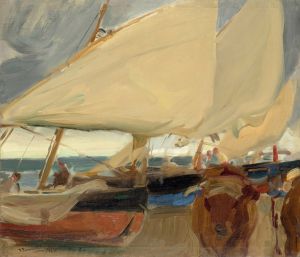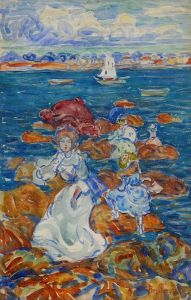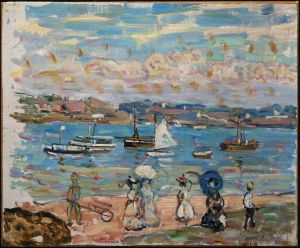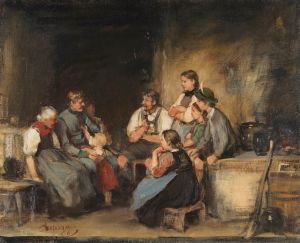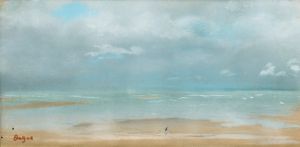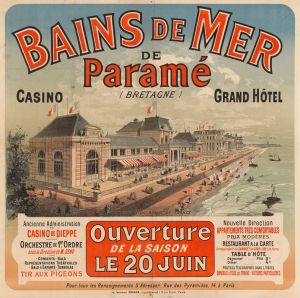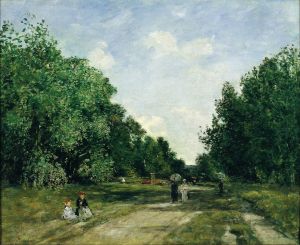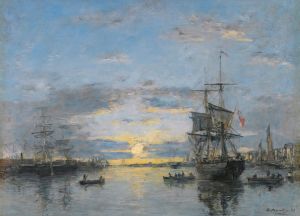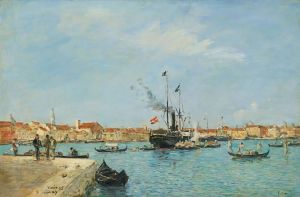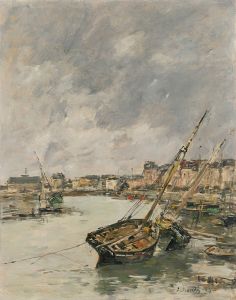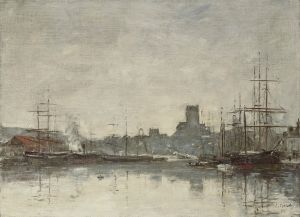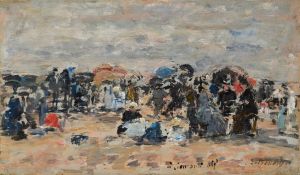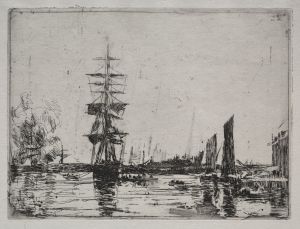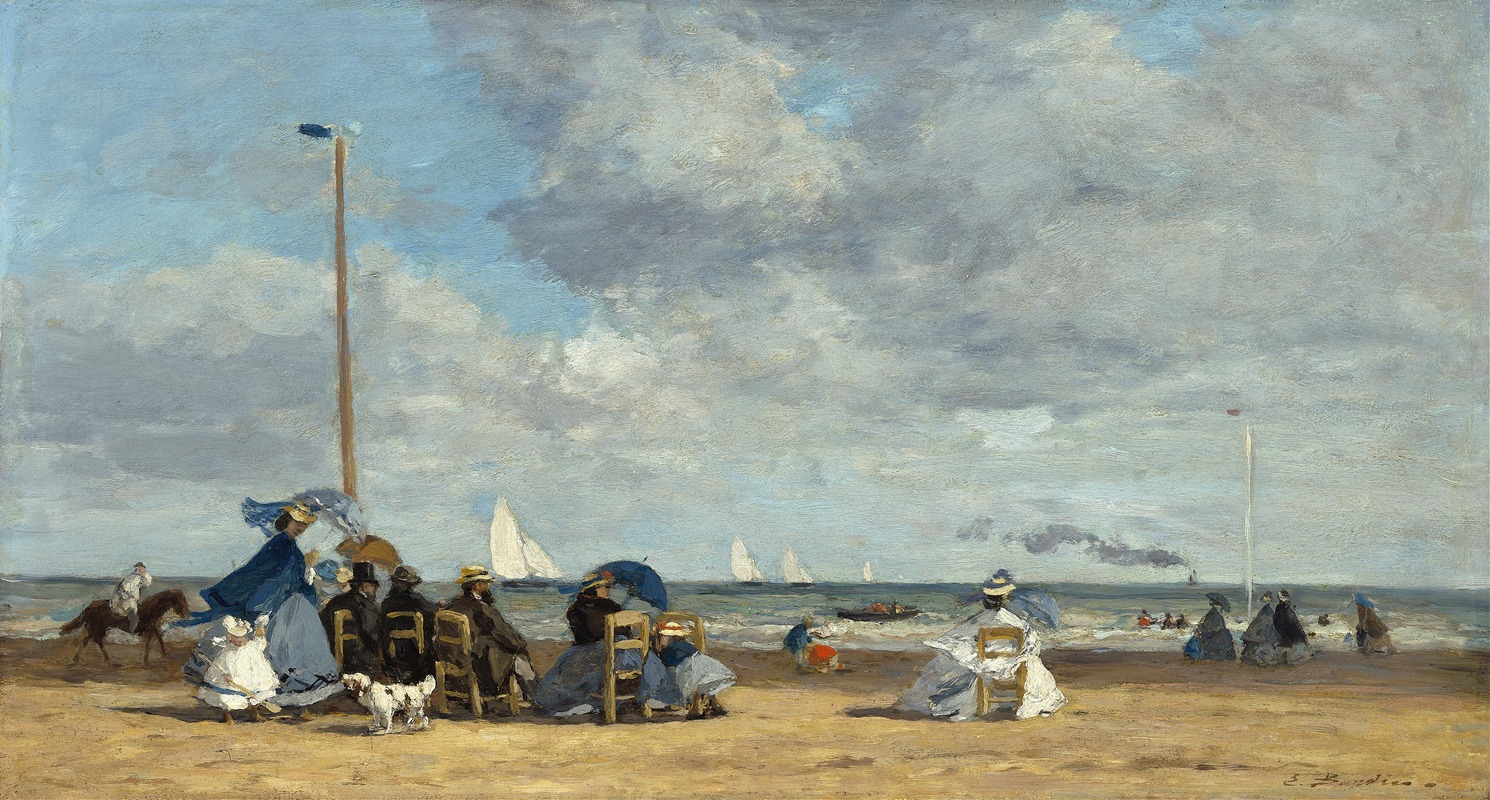
Beach at Trouville
A hand-painted replica of Eugène Boudin’s masterpiece Beach at Trouville, meticulously crafted by professional artists to capture the true essence of the original. Each piece is created with museum-quality canvas and rare mineral pigments, carefully painted by experienced artists with delicate brushstrokes and rich, layered colors to perfectly recreate the texture of the original artwork. Unlike machine-printed reproductions, this hand-painted version brings the painting to life, infused with the artist’s emotions and skill in every stroke. Whether for personal collection or home decoration, it instantly elevates the artistic atmosphere of any space.
"Beach at Trouville" is a painting by the French artist Eugène Boudin, created in 1864. Boudin is widely recognized as one of the precursors of the Impressionist movement, and his works often depict coastal scenes and beach landscapes. This particular painting is a notable example of his fascination with the seaside and the leisure activities of the bourgeoisie.
The painting captures a lively beach scene at Trouville-sur-Mer, a popular resort town in Normandy, France. Trouville was a fashionable destination for Parisians in the 19th century, and Boudin frequently visited the area to paint its vibrant atmosphere. The composition of "Beach at Trouville" showcases Boudin's skill in portraying the effects of light and atmosphere, which would later influence the Impressionists.
In "Beach at Trouville," Boudin employs a loose, fluid brushwork that effectively conveys the movement and energy of the scene. The painting features a group of elegantly dressed figures, including women in long dresses and bonnets, men in suits, and children playing in the sand. The figures are depicted in various activities, such as walking, conversing, and relaxing under parasols. This depiction of leisure and social interaction reflects the changing social dynamics of the time, as the middle and upper classes began to enjoy more leisure time and travel opportunities.
The sky in the painting is a dominant feature, occupying a significant portion of the canvas. Boudin's treatment of the sky is particularly noteworthy; he uses a range of blues and whites to capture the shifting clouds and the play of light. This focus on the sky and its atmospheric conditions is a hallmark of Boudin's work and highlights his interest in capturing the transient effects of weather and light.
Boudin's ability to render the subtleties of light and atmosphere had a profound impact on his contemporaries, including Claude Monet, who regarded Boudin as a mentor. Monet's own work would later reflect the influence of Boudin's techniques and subject matter, particularly in his series of beach and coastal scenes.
"Beach at Trouville" is housed in the Musée d'Orsay in Paris, which holds an extensive collection of 19th-century art. The painting is celebrated for its vibrant depiction of a seaside resort and its contribution to the development of modern landscape painting. Boudin's work, including this piece, played a crucial role in the transition from the more formal, academic styles of the early 19th century to the innovative approaches of the Impressionists.
In summary, "Beach at Trouville" by Eugène Boudin is a significant work that captures the essence of a 19th-century French seaside resort. Through his masterful use of light and color, Boudin provides a glimpse into the leisurely pursuits of the time and lays the groundwork for the Impressionist movement that would soon follow.





